SUMMARY
- “Resilience is that promise of the human spirit — that it can rise through the most difficult times in life and recapture its sense of aliveness and connection and meaning and move forward with great faith and optimism.”
- Resiliency is crucial for overcoming the tough times we face, so how do we build more of it? In this episode, learn how to become more resilient during your toughest days.
- “There’s a difference between picking yourself up and getting back at the day and being resilient enough to course correct for what’s true to you, to where you want to go.”
- Ready to become stronger? Learn these 3 tips to increase your resilience, build your vision, and rise through some of your most difficult challenges.
- Watch the video to get the full training.
- Already have the High Performance Planner and CRUSHING each and every day? Let’s celebrate you! Take a photo with your planner and use #HPXlife or #TeamHPX.
HOT NEWS & DEALS!
-
Join the Entrepreneur’s Challenge!
Sign up for my 7-day crash course and you’ll learn the strategies, tools, and revenue drivers needed to start (or scale) your dream business! Click here to sign up!
-
Get the High Performance System!
If you want to level up personally and professionally, High Performance System is the resource you need. The High Performance System will guide you through developing and implementing the 6 science-backed habits that will move the needle from ordinary to extraordinary. Develop the habits that lead to long-term success, positive relationships, and healthy well-being! Get the High Performance System!
DID YOU KNOW?
I give weekly prizes, gratitude and shout-outs to our students, so post a screenshot or video on Instagram and use #TheBrendonShow! I can’t wait to hear your thoughts about this episode!
RELATED POSTS
How to Become Unstoppable
Secrets to Resilience (How to Bounce Back After Failure)
How to Stay Positive During Your Worst Days
3 Principles and 3 Practices for Better Discipline
How to Deal with Physical, Mental, and Emotional Burnout
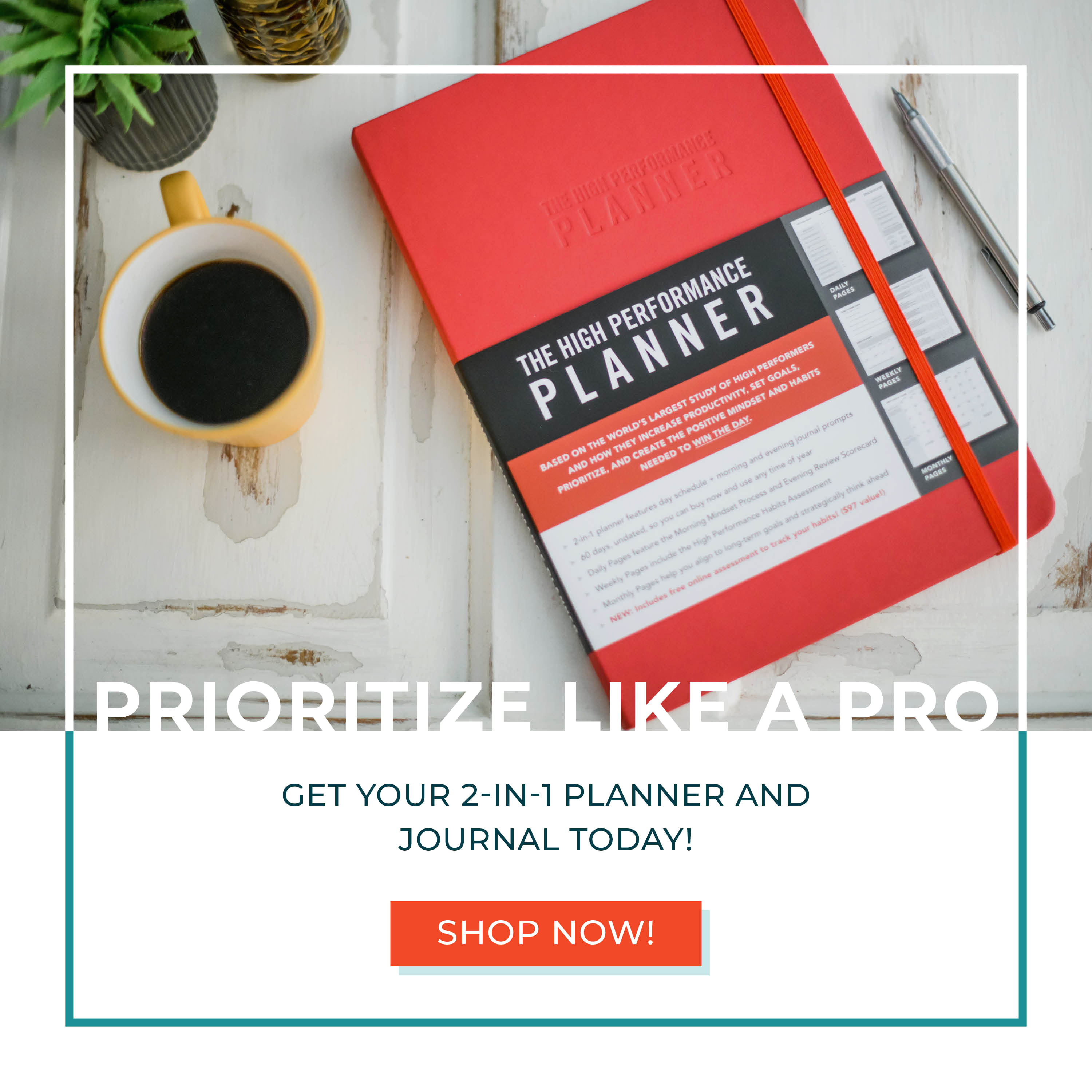
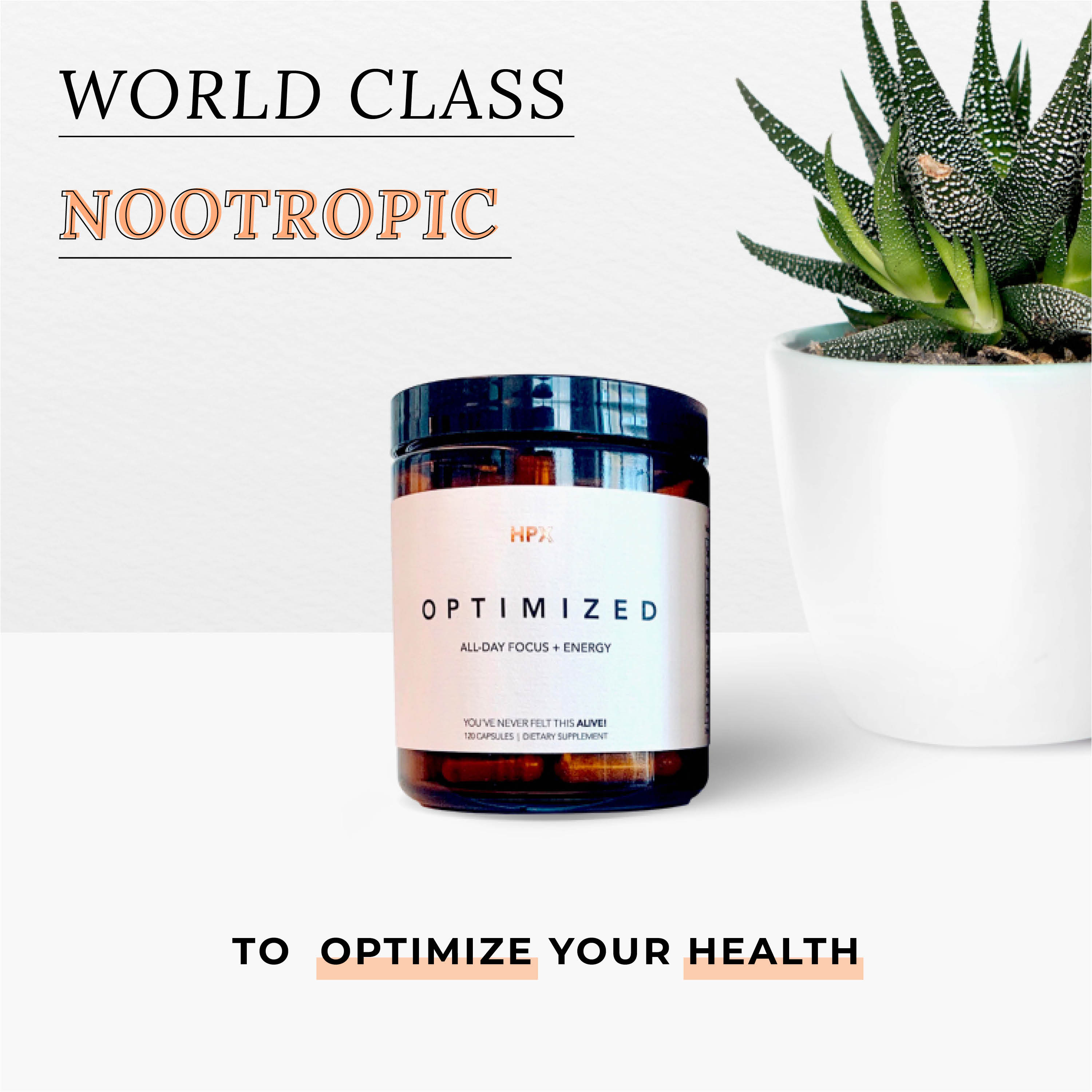
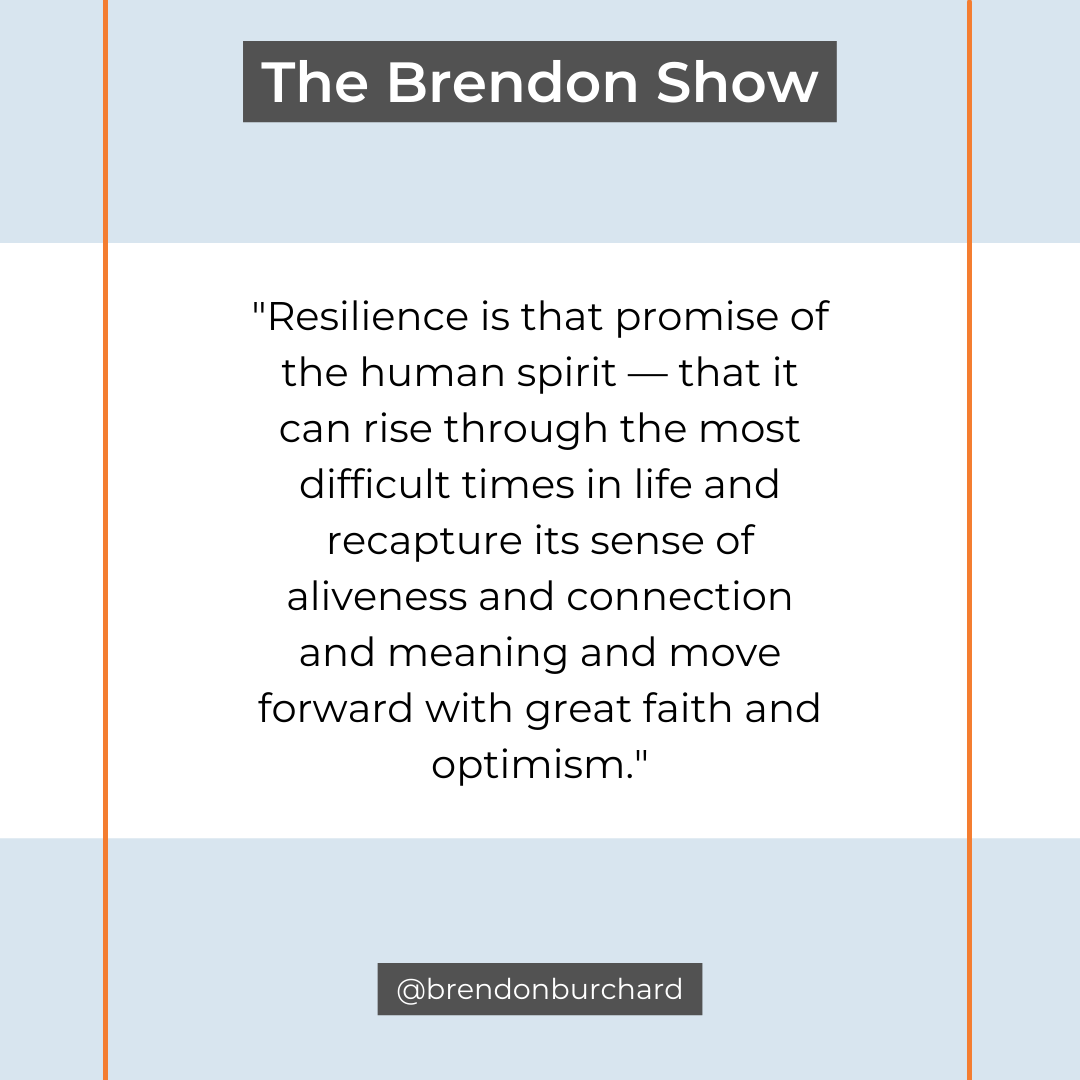
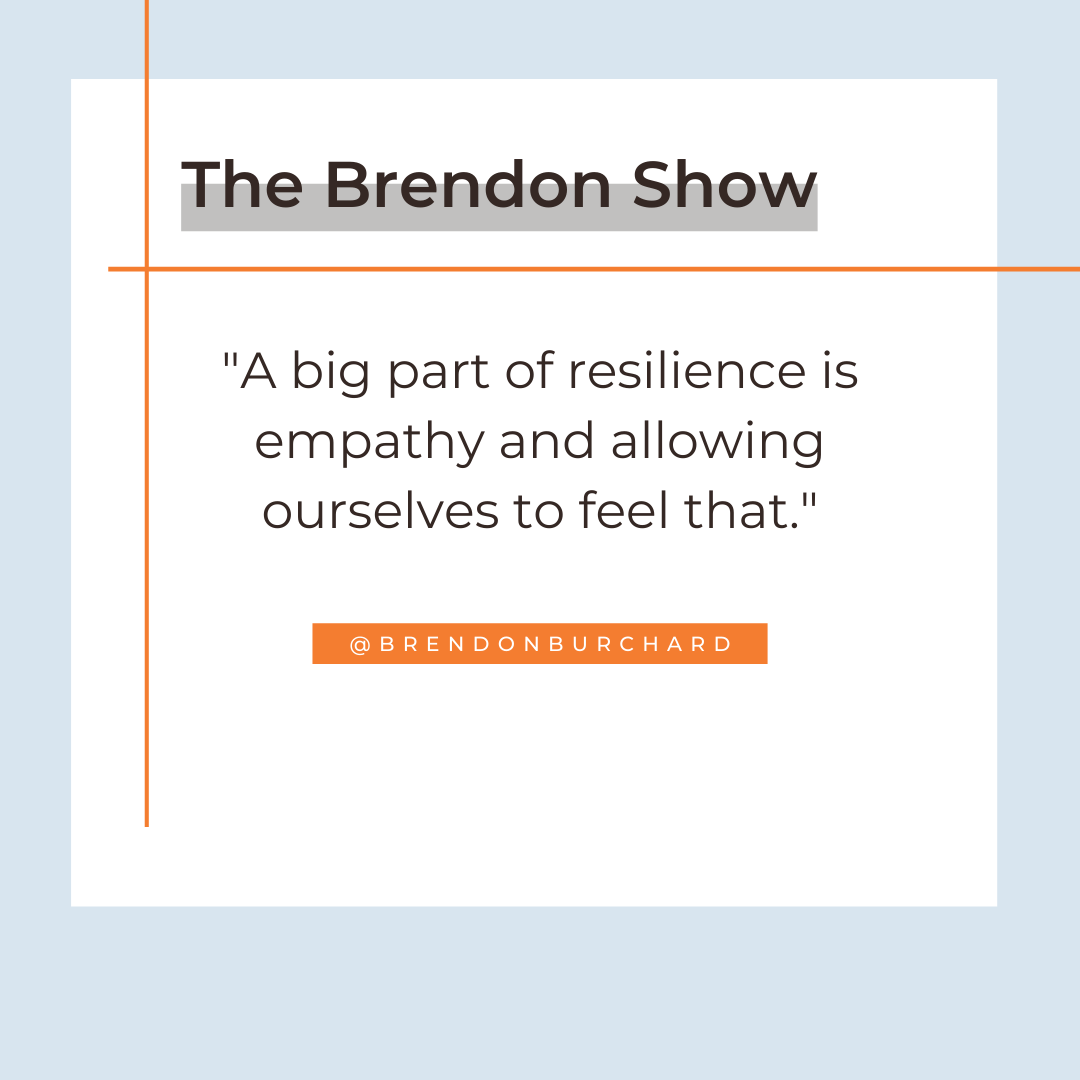
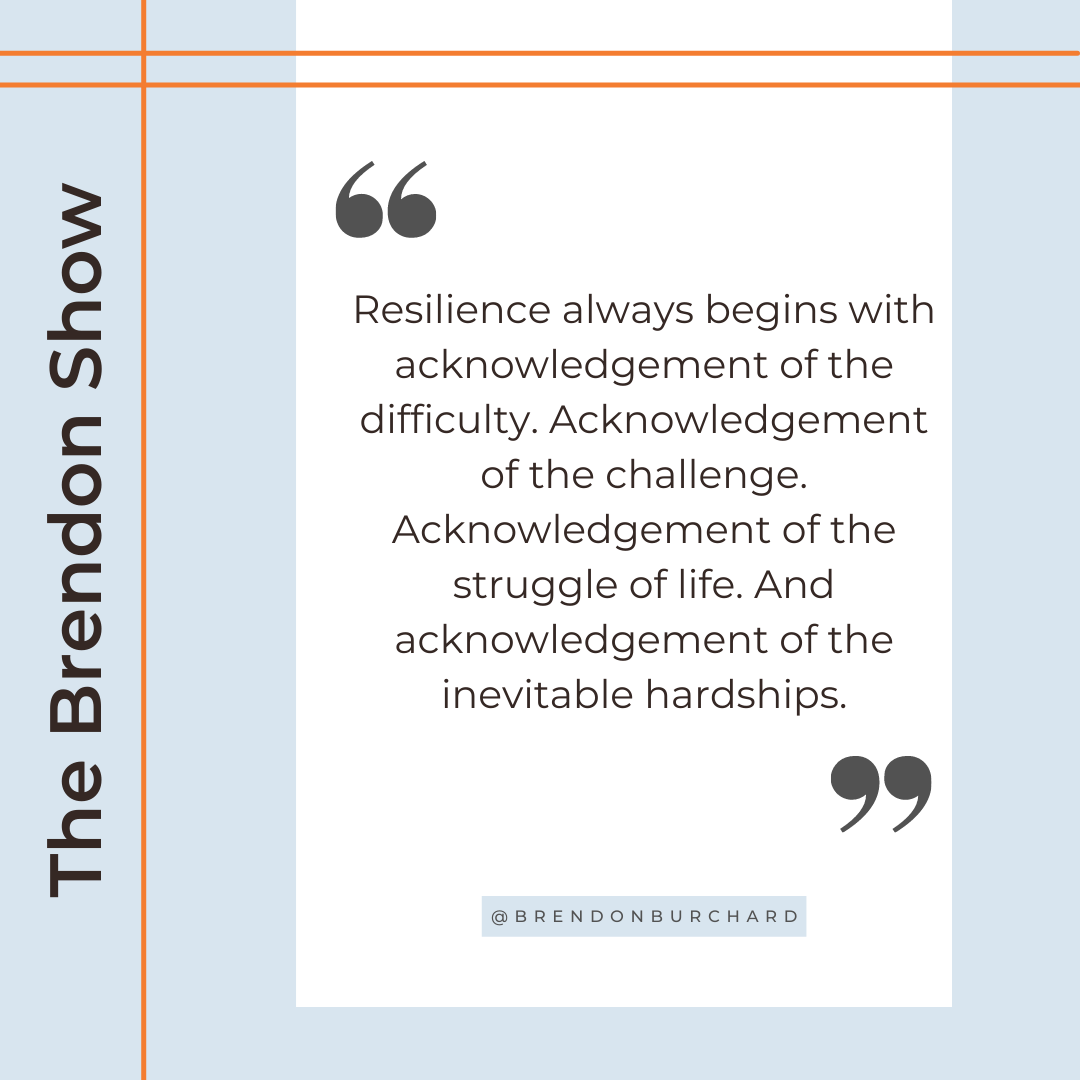
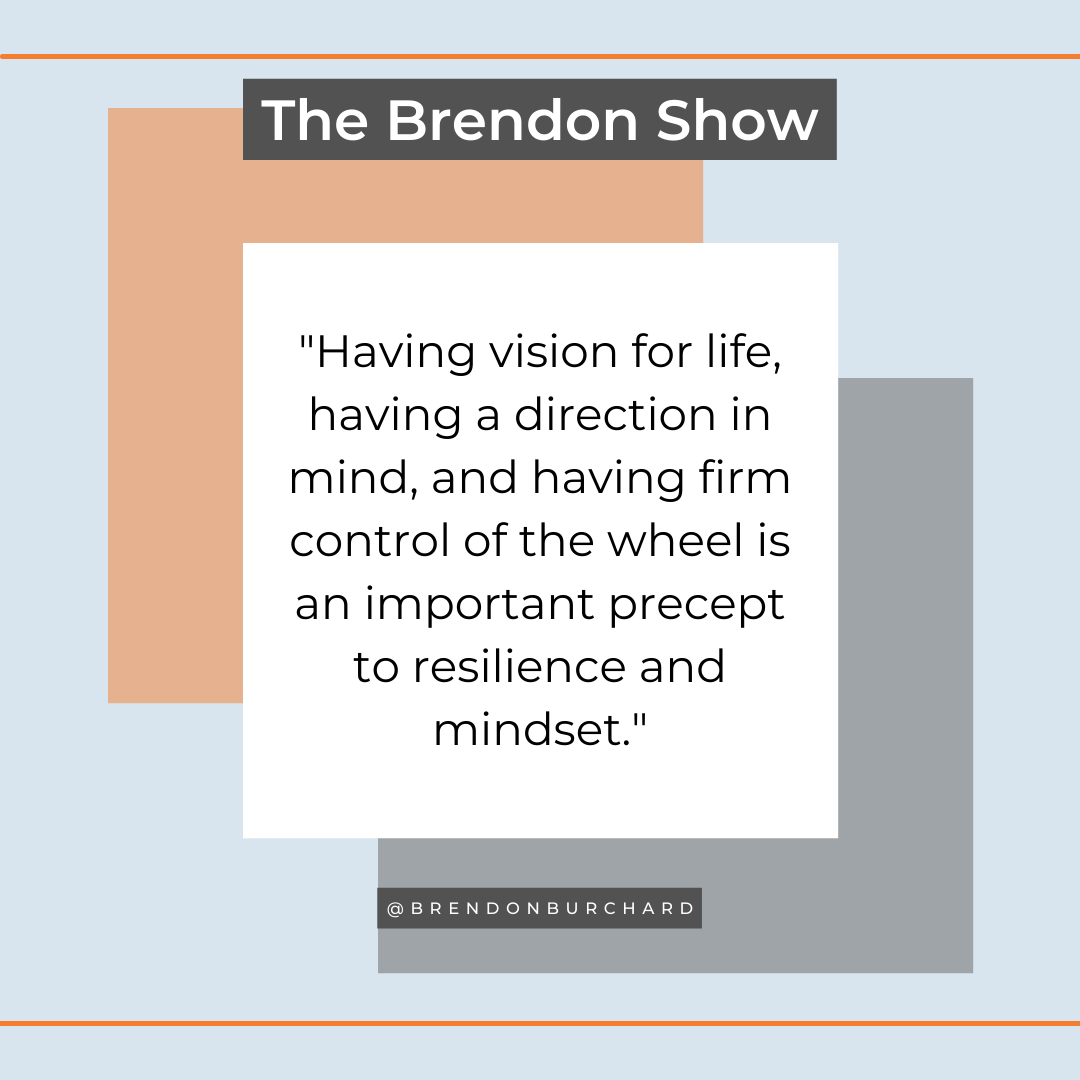
FULL TRANSCRIPT
[The following is the full transcript of this episode of The Brendon Show. Please note that this episode, like all TBS episodes, features Brendon speaking extemporaneously–he is unscripted and unedited. Filmed in one take, The Brendon Show has become one of the most viewed unscripted, direct-to-camera self-help series in the history of YouTube. It has also been the #1 Podcast in all of iTunes and is regularly in the top podcasts in Self-Help and Health categories around the globe. Subscribe to the free motivational podcast on iTunes or Stitcher.)
Resilience. If we’ve ever needed this conversation, it’s probably right about now. People have really struggled to move through the dramatic changes we’ve all been experiencing, not just in the last year, but if you look at just the craziness of the last five years or the last 10 years, we’ve had technical disruptions, economic disruptions, pandemics, we’ve had, you know, major political shifts around the world. Change is always accelerating. It’s compounding each and every single year as the human body is being more connected to one another. It’s an incredible challenge at the macro-level to deal with all the changes that we face when sometimes it’s scary, uncertain, discouraging, frustrating. When you witness hate, when you witness, you know, things that just don’t vibe with your personal values or your socioeconomic beliefs or even your faith beliefs, all of that can really knock a person down.
Resilience is that promise of the human spirit — that it can rise through the most difficult times in life and recapture its sense of aliveness and connection and meaning and move forward with great faith and optimism.
We know these things as we hear about resilience all the time. So today, I’m hoping that I can provide a unique perspective on it from my vantage point.
I believe that the first thing we have to know about resilience, outside of what I just shared about it, I really believe resilience is that promise of the human spirit to pick itself back up and keep going faithfully and optimistically forward. And that idea of picking ourselves up is so important in resilience, but I think that a lot of resilience and our ability to do that is stymied or hampered or slowed down by the fact that we get hurt. We experience emotional pain, trauma, sadness, difficulty, and when we’re in those days and nights where we feel that it’s darkest, it’s really hard to get up and go again. And it’s not that most people lack mental strength or mental tenacity, which has become very popular in the last couple of years of like, “Oh, well, they’re just, they’re not mentally strong or resilient”. Let’s not forget the difficulties that people face in life.
Because a big part of resilience is empathy and allowing ourselves to feel that.
Allowing ourselves to feel those challenging days and those dark nights and those frustrating moments. Allowing ourselves to be like, “Oh, yeah, it’s all right if I’m not perfect. I’m struggling right now”.
You know, resilience always begins with acknowledgement of the difficulty. Acknowledgement of the challenge. Acknowledgement of the struggle of life. And acknowledgement of the inevitable hardships.
Picking yourself back up or remaining strong and optimistic through difficult times, that’s super hard. If we don’t first and foremost allow ourselves to sense it, feel it, recognize it, and the issue is when people do sense and feel and recognize it, unconsciously or consciously. They often make a mistake, and this is going to lead to our very first idea. And it’s a big idea.
1. Hurt and Pain are Indicator Lights, Not the Wheel
We have to remember that hurt and pain are indicator lights, not the wheel. Let me draw out this metaphor for everybody today and I’ll go deeper on it because I’ve introduced this on social media in the past and people are always like, “Whoa, that’s a huge concept”. And this idea is that when we’re young and or we’re lacking awareness or we haven’t done our personal development and we’re just going through the motions of life, a lot of our unconscious behavior becomes steering ourselves and driving ourselves with, through, or away from pain and hurt.
We got hurt when we were teenagers, so we shut down. We felt pain of trauma, so we started doing everything to avoid that versus everything to live life. And so, I use this metaphor as hurt and pain are indicator lights, not the wheel, and that means, imagine you’re driving your car, and as you’re driving your car, you notice that some of the indicators aren’t where you thought they would be. You don’t drive the car forever based on one of those lights. Have you ever had a light go out in your car? I had my car and I had this indicator light that the brake, the parking brake was on, but it wasn’t. The light always said the parking brake was on. I mean, I had a 1988 Nissan Sentra. It had three different colors on it ’cause I had wrecked it before. There were bondo colors and it was orange and red. This light was always on. Well, I didn’t stop because that light was on. I knew that that light was important, but I could verify whether or not that thing had to stop my forward momentum or change my destination. And what most people do is when they get hurt or they feel pain, they start gripping the wheel of life in steering only to avoid pain.
It’s kind of like if you’re driving down a road and if you steer only to avoid the potholes, you will definitely run off that road. There will be a greater accident. Because what’s more important in driving is that you have a vision of where you’re going, and that the wheel, you, the person at the wheel, are directing this vehicle of life where you want it to go. Not just where you are afraid it might go, and not just a way from pain, but rather towards your ultimate vision, and sometimes we lack resilience in life. We are not even conscious of it because all we’re actually doing is never recovering from those indicator lights, and we’re driving by the indicator lights. You know?
Another example I gave this morning, I think on social media was to imagine you’re a pilot of a plane and you’re flying that plane to New York, and you know what? The indicator lights, they show problems. Well, you work to solve the problem of the indicator light, but just because it’s windy or you’re getting a lot of turbulence, it doesn’t mean that when you’re going to New York and get this turbulence, you go, “Oh my gosh, this is just terrible, I better go where the turbulence isn’t”, and you end up in Philadelphia. No, you’re going to New York.
And that having vision for life, having a direction in mind, and having firm control of the wheel is an important precept to everything we talk about today in resilience and mindset.
This means that if pain has a hold of that wheel, you’re not going to be where you want to be in life. Consciousness, intention, awareness, mindfulness, spirit, soul, future, purpose, mission, whatever you call it, that’s got to be at the wheel. When you got hurt and you were 15, that didn’t need to dictate your next decade. You didn’t need to drive your next decade of your life because of the hurt. You got divorced at 40? You don’t need to be at 50 having just been reacting to that indicator light for a whole decade. What you got to go is go, “Oh, okay, this thing happened. It hurt. I had to check in on myself. I had to make sure that I was okay. I had to take care of that problem or take care of myself, but that’s not going to direct my map. That’s not going to direct where I go. That’s not going to make me steal. It’s not going to steal my ability to steer my life.” And a realization of resilience comes when, often we realize that we did pick ourselves up, but we went in the wrong direction.
2. Generate Clarity
See, a lot of people actually have tremendous resilience and they never get credit for it. But it was the choices they made next that showed they didn’t have ultimate resilience. Because you know what we learn in high performance habits? And I know you all know this. That first habit of the highest performing people in the world, which remember, they are also the highest in wellbeing and positive relationships, was clarity. They had clarity about who they were, where they wanted to go. They had clarity about who they were and where they wanted to go. Think about that for a minute. They had clarity about who they were and where they wanted to go. It’s a pretty powerful idea, right? That if I get hurt or I feel pain or I feel sadness, and I shut myself down, but I’m still able to pick up and go through the week still. Yeah, I picked myself up, but if I didn’t ask, “Wait, okay, that wasn’t what I expected, that did hurt, but where, what’s it about now? Where do I want to go now? What is my vision?” Without that, I’m here to tell you it’s extremely hard to be truly resilient.
There’s a difference between picking yourself up and getting back at the day and being resilient enough to course correct for what’s true to you, to where you want to go.
So to be resilient, we have to know in the future, you know what, next time I get discouraged, someone judges me, I get hurt, I’m sad. Next time I experience that, you know what I’m going to do? I’m going to remember that’s an indicator light to check in with myself. That’s an indicator light to check in, see what’s meaningful, see what matters to me and where I’m going to go now. What’s the next right action of integrity for me now? What does my future hold for me now? Not to now grip the wheel and stay or live in the pain or the hurt or direct ourselves only from the pain and the hurt. Because what resilience is is the ability to no longer to direct ourselves from the discouragement, the hurt or the pain. Now I know this is kind of like an advanced idea in personal development here, and some people will always say, “Well, pfft, yeah, easy for you to say, you didn’t have this person break your heart or you didn’t have that happen at your job or you didn’t have this happen, you know, in your business.” And I’m like, “Well, I probably did or worked with somebody who did”. The good news is that of the seven billion people on the planet, somebody did. If you keep thinking your hurt and pain is only yours, it only happens to you, then you feel even more isolated and more less likely to enter the world again faithfully and confidently. And so, don’t be one of those people who are like, “You don’t understand my hurt and pain”, because that’s a slippery slope into isolationism. That’s a slippery slope into withdrawing from the world. It’s a slippery slope of closing off your heart when you think other people can’t understand. Maybe the immediate people around you who hurt you, they don’t understand, but the world at large, they get it. They’ve been through it. They saw a parent go through it. They saw somebody experience it. And when we can recognize the common human story that’s always struggling or progressing, we can go, “Oh, other people struggle too, but they can progress too”, and so can you.
3. Go See a Therapist
So if you’ve had an old hurt or an old pain that you’ve been hanging on to and you need help getting over it, I encourage you, go see a therapist, and I mean that truthfully. I think we disparage mental health, but if old hurts and pains are still driving you after years, you need professional assistance. You need to get some help with that. Get that therapist, get that licensed professional. If it’s, you know, just a bothersome thing or you’re not clear about it, maybe you get a coach. But I think at the end of the day, if it’s an old hurt, an old trauma, an old serious emotional pain, and you’re still stuck there, you weren’t able to grab the wheel back, either it’s, you know what, either personal development hopefully trips that thing and opens it up for you and you find a new day of mindfulness and consciousness and readiness and strength and here you go, but if it’s been years and you still can’t, get help. Get service to that. I think so many people never learn the skill of being resilient because we aren’t taught it. And part of therapy or professional assistance is someone who teaches you it. Somebody helps you. They talk you through it, and you’re like, “Oh, that’s how. I didn’t know I was supposed to think about that.”
A simple metaphor like this might serve, but you’ve got to go deep. That’s what I love about growth that we’re going deep this month. I mean, you’re going to hear from, you know, six, seven, eight world-class coaches about their experiences and how they became resilient about it. I learned long ago, don’t hold on or steer your life because of pain and hurt. Don’t hold onto it. And the more you hold onto it or the more you steer from it, the more the next major challenge comes up stops you dead. The more the next major challenge makes you freeze. The longer you hold onto that stuff, the longer it’s going to be a difficult road. And I had to learn that from, you know, past relationships, past situations in business, past situations, in, you know, my own personal wellbeing. I think it’s important. We always remember. Okay, I’m not, I see this as important. I’ll acknowledge it. I’ll check in. I’ll handle the problem, but I’m going to start tomorrow, keep steering back towards the truth of who I am or what my future holds for me, and I’m going to connect with that and drive towards that, not hold onto the past.
